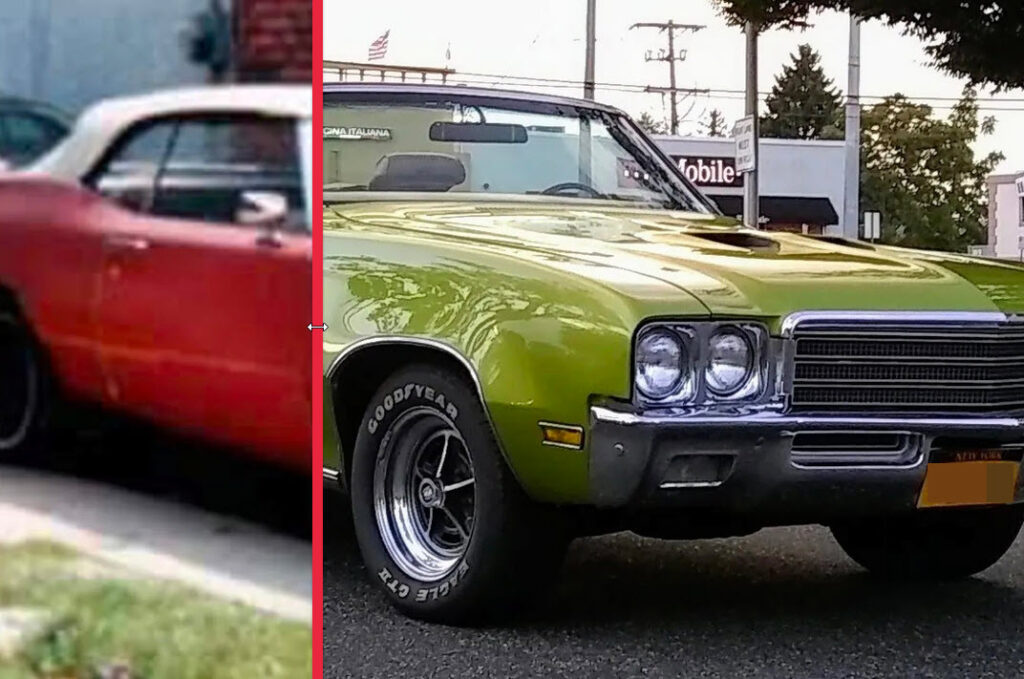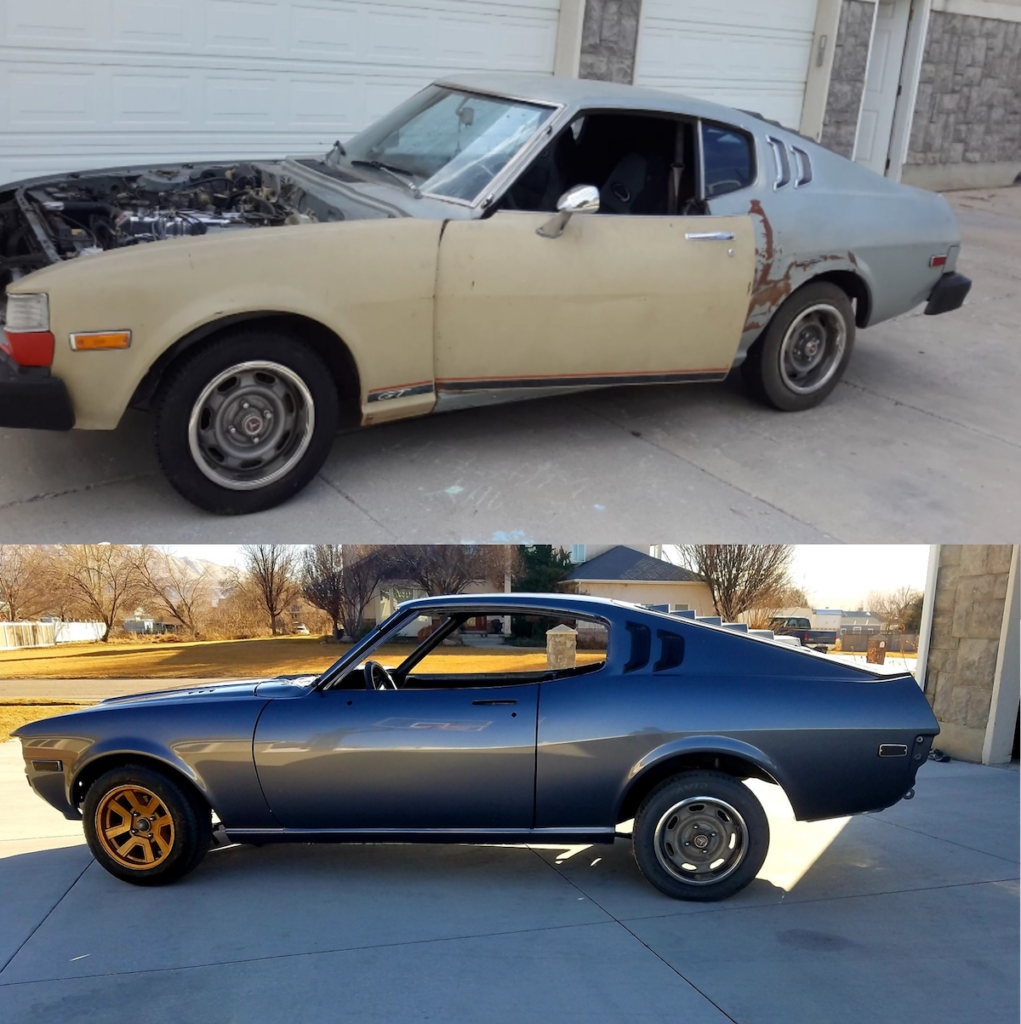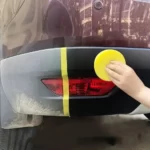Restored cars before and after reveal dramatic transformations through meticulous restoration and skilled craftsmanship. These restorations not only breathe new life into vintage vehicles, but also showcase the time and effort put into preserving automotive history.
Table of Contents
ToggleWhether it’s a classic muscle car or a vintage luxury sedan, the process of restoration tells a unique story of reviving the past and honoring the artistry of automotive engineering. From revamping rusty exteriors to refurbishing worn-out interiors, the before and after images of restored cars captivate audiences with their stunning visual narratives.
The restoration journey illustrates the dedication of owners and enthusiasts in reviving these iconic automobiles to their former glory. Moreover, it serves as a testament to the enduring appeal of vintage and classic cars in today’s car culture, further solidifying their timeless allure.

Credit: americancollectors.com
Restored Cars
Restored cars undergo a remarkable transformation, showcasing stunning before and after images. Witness the impressive results of skilled restoration work through captivating car transformations.
History Of Restored Cars
Cars have been an integral part of our culture for more than a century. Since their inception, cars have evolved in countless ways, from design and technology to performance and safety. However, there is something captivating about the history of restored cars. These vintage beauties hold stories of their own; they evoke nostalgia and showcase the craftsmanship of yesteryears. Restored cars offer a glimpse into an era when automobiles were not just a means of transportation but a symbol of style and status. Restoring a car involves bringing it back to its original condition or even enhancing it beyond its former glory. From classic American muscle cars of the 1960s to elegant European roadsters of the 1930s, restored cars encompass a wide range of makes and models. But why do enthusiasts invest countless hours and resources into bringing these vintage vehicles back to life? The answer lies not only in the appreciation of automotive history but also in the satisfaction of preserving a piece of the past for future generations to admire.
Challenges And Techniques
Restoring a car is no easy task. It requires knowledge, patience, and a meticulous attention to detail. Challenges arise at every step of the restoration process, from sourcing original parts to repairing or recreating worn-out components. Each car presents its unique set of obstacles, as no two vehicles are alike in their condition or history. Restorers must assess the overall condition of the car and carefully plan their approach to bring it back to its former glory. One of the key techniques employed in car restoration is dismantling. This involves carefully disassembling the vehicle, taking note of every component and its condition. It allows restorers to assess the damage, identify missing or broken parts, and plan for necessary repairs or replacements. Once the car has been carefully dismantled, the restoration process can begin. Restoring a car also involves mechanical and cosmetic work. Mechanical repairs focus on the engine, transmission, suspension, and other critical systems, ensuring they operate at their optimal level. Cosmetic work, on the other hand, includes tasks such as bodywork, painting, and upholstering – all aimed at restoring the car’s original appearance. These techniques require the expertise of skilled craftsmen who can merge traditional methods with modern technology to achieve exceptional results. — In conclusion, the history of restored cars is a testament to the passion and dedication of car enthusiasts. These vintage vehicles not only tell stories of the past but also serve as reminders of the impeccable craftsmanship and design that defined different eras. Restoring a car is a labor of love, and the challenges faced along the way only add to the satisfaction of seeing a once neglected vehicle transformed into a timeless masterpiece.

Credit: www.pinterest.com
Before Restoration
Restoring a classic car is like a journey back in time. These vehicles usually come with years of wear and tear, and each one carries the unique history of its previous owners. Before the restoration process begins, a thorough assessment of the car’s initial condition is conducted to determine the extent of work needed. The journey from a neglected classic to a stunning restored vehicle begins with understanding the car’s original state.
Initial Condition
Most classic cars that are in need of restoration have fallen victim to rust, deterioration of paint, and worn-out interiors. These vehicles often require extensive work to bring them back to their former glory. The initial condition of each car provides a snapshot of its past, showcasing the challenges that lie ahead in the restoration process.
Identifying Restoration Needs
During the evaluation stage, detailed assessments are carried out to identify the specific restoration needs of the classic car. This involves examining the body, engine, interior, and overall structural integrity of the vehicle. By meticulously identifying these needs, the restoration team can create a comprehensive plan to address all areas requiring attention.
Restoration Process
Restoring a classic car can be a labor of love, transforming a worn-out vehicle into a pristine showpiece. The restoration process involves various meticulous steps, each contributing to the revival of the automobile’s former glory. From stripping down the car to assessing its condition to the comprehensive mechanical and aesthetic restoration, the process is a blend of craftsmanship and dedication.
Stripping And Assessing
Before embarking on the restoration journey, the first step is to meticulously strip down the car to its core components. This stage involves removing the interior, exterior panels, trim, and engine, allowing the assessment of the vehicle’s condition. The goal is to identify any structural damage, rust, or areas requiring attention.
Mechanical And Aesthetic Restoration
With a comprehensive assessment completed, the restoration process then delves into both the mechanical and aesthetic aspects of the vehicle. The mechanical restoration focuses on rebuilding the engine, transmission, suspension, and braking systems, ensuring they perform with precision and reliability. Simultaneously, the aesthetic restoration entails refurbishing the bodywork, applying fresh paint, and reupholstering interiors with high-quality materials, revitalizing the car’s appearance.
After Restoration
Restoring a car to its former glory is a labor of love that requires skill, patience, and attention to detail. But the real joy lies in seeing the amazing transformation that takes place after all the hard work is done. The after restoration stage is where the true beauty of the car shines through, showcasing the incredible craftsmanship and dedication that went into its revival.
Showcasing The Transformation
Once the restoration process is complete, the beauty of the restored car can be fully appreciated. The car that was once worn-out and neglected now looks like it just rolled off the showroom floor. The stunning transformation is often the highlight for car enthusiasts, as it brings to life the timeless elegance and design of classic automobiles.
Whether it’s a vintage muscle car, a sleek sports car, or a charming vintage sedan, the restored vehicle becomes a showstopper wherever it goes. From the glossy new paint job to the shining chrome accents and meticulously polished interiors, every element of the car exudes a sense of pride and accomplishment.
The restored car becomes a head-turner on the road, drawing attention and admiration from passersby. Cruising down the street or parked at a car show, it becomes a visual delight that invokes nostalgia and awe. The restoration process has taken a forgotten relic and turned it into a work of art, capturing the essence of its original glory.
Maintenance And Preservation
Preserving the restored car’s beauty and functionality is just as important as the restoration itself. Regular maintenance is crucial to ensure the car remains in top condition for years to come. This includes routine oil changes, tune-ups, and inspections to address any potential issues and keep the car running smoothly.
Preservation efforts also extend to protecting the car from the elements. Storing the car in a climate-controlled garage shields it from extreme temperatures and humidity, preventing damage and deterioration. Protective covers and occasional waxing help guard against scratches and fading caused by sun exposure.
In addition to maintenance, preservation also involves documenting the restoration process and the car’s history. Keeping a detailed record of the work done, including before and after photos, adds value to the car and allows future owners to appreciate the effort and expertise that went into its restoration.
Restored cars hold a special place in the hearts of car enthusiasts. They are a testament to the craftsmanship and love for the classics, turning back the hands of time and reviving the glorious past. By showcasing the transformation and ensuring proper maintenance and preservation, these restored cars can continue to bring joy and admiration for generations to come.
Impact Of Restoration
Restoring cars holds immense cultural significance and contributes to the preservation of automotive history. Additionally, it has a significant impact on the economic value of vintage and classic cars. Let’s explore these factors in more detail.
Cultural Significance
Restored cars have a deep-rooted cultural significance as they serve as a link between the past and the present. These vehicles offer a glimpse into different eras, showcasing the design, craftsmanship, and engineering techniques of their time. By restoring and preserving these cars, enthusiasts and collectors are able to pay homage to the history of automotive innovation.
The cultural significance of restored cars goes beyond the physical aspect. These vehicles often evoke a sense of nostalgia and romanticism, bringing back memories and emotions associated with a particular era. They become a storytelling medium, enabling individuals to connect with the past and appreciate the evolution of automotive culture.
Economic Value
The restoration of classic and vintage cars significantly increases their economic value. A well-restored car holds a higher market value due to its authenticity, quality, and historical significance. Enthusiasts and collectors are willing to invest substantial amounts of money in acquiring these restored treasures.
| Benefits of Restoration | Factors Influencing Economic Value |
|---|---|
|
|
Restoration not only enhances the aesthetic appeal of a car but also ensures its mechanical soundness. This attention to detail adds value to the vehicle, especially for collectors and enthusiasts in search of fully functional antique cars. The investment made in restoration can yield substantial returns in the long run.
In conclusion, the impact of car restoration is undeniable, both culturally and economically. It enables us to cherish and celebrate our automotive heritage while also creating opportunities for individuals to immerse themselves in the world of vintage and classic cars.
Frequently Asked Questions On Restored Cars Before And After
Can A Restored Car Be As Good As New?
Yes, a properly restored car can be as good as new, both in appearance and performance.
How Long Does It Take To Restore A Car?
The time required to restore a car depends on factors such as the model, condition, and complexity of the restoration. It can take several months to years.
What Is The Process Of Car Restoration?
The process of car restoration involves disassembling the car, repairing or replacing damaged parts, refinishing the body, and reassembling the vehicle to its original or desired condition.
How Much Does Car Restoration Cost?
The cost of car restoration varies depending on factors such as the extent of restoration needed, the rarity of the car, and the desired level of detail. It can range from a few thousand dollars to tens of thousands or more.
Conclusion
Witnessing the transformation of restored cars is truly remarkable. From rusty shells to gleaming masterpieces, these before and after pictures speak volumes about the dedication and expertise of car restorers. Each restored car tells its own unique story, igniting a passion for vintage vehicles and reminding us of the beauty that comes with preserving automotive history.
For enthusiasts and collectors alike, the satisfaction of seeing these restored cars shine is unparalleled. The restoration process breathes new life into these classic automobiles, ensuring their legacy endures for generations to come.




2 Comments